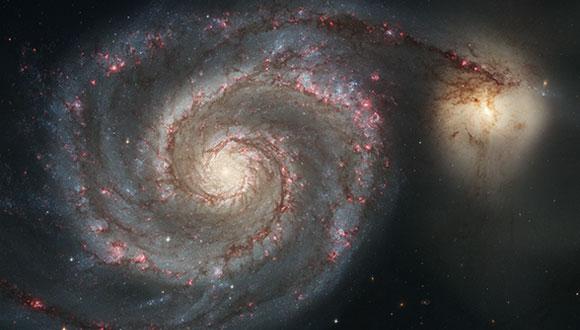Astronomy & Astrophysics Seminar: Instabilities driving galaxy evolution: From cold flows to violent disks
Dr. Nir Mandelker, HU
Abstract:
Gas accretion and star formation in massive galaxies at high redshifts, z~2-3, near the peak of cosmic star formation, was a much more violent process than today. Streams of cold, dense gas flowing along filaments of the cosmic web penetrate supersonically through the hot circumgalactic medium encompassed by a stable shock at the virial radius of the dark-matter halo. When reaching the galaxy, the cold flows induce high gas fractions and surface densities, causing violent disc instability (VDI). During VDI, large amounts of gas flow towards the galactic center on a migration timescale, comparable to the disk orbital timescale, and giant star-forming clumps of masses 10^8-10^9 M_{\odot} form.
In this talk, I will review various aspects of these instabilities and how they affect galaxy evolution and star formation.
As a first step in exploring the dissipation, fragmentation and possible breakup of the streams, in order to understand how a significant fraction of the inflow can feed the galaxy growth and high star-formation rate, I will discuss linear Kelvin-Helmholtz instability (KHI) of a cold, dense stream flowing through a hot, dilute medium in the transonic regime, both analytically and using idealized simulations.
I will then discuss the origin of VDI in high redshift galaxies fed by cold streams. This includes its relation to the classical Toomre instability and to the compressible nature of turbulence.
Seminar Organizer: Prof. Sara Beck


